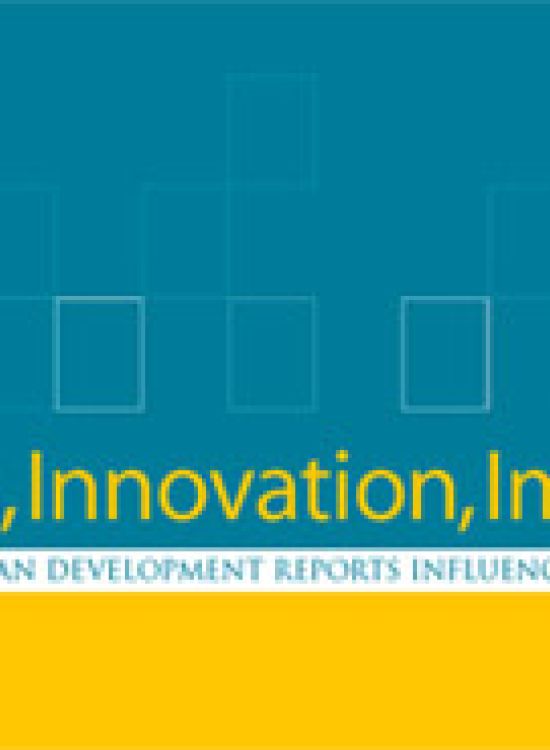Ideas, Innovation, Impact
How Human Development Reports Influence Changes

UNDP (United Nations Development Programme). 2006. Ideas, Innovation, Impact: How Human Development Reports Influence Changes. New York.
Ideas, Innovation, Impact
How Human Development Reports Influence Changes
National and regional Human Development Reports (HDRs) are much more than just publications. They are dynamic advocacy tools created through a process of broad participation and active engagement within countries and across regions.The following pages chronicle some of the most outstanding and innovative examples. Commissioned by the United Nations Development Programme (UNDP), which as the UN’s development network spans 166 countries, the reports bring people together to debate and articulate their development priorities. They strengthen capacities to produce data and analysis.And they focus political attention on concrete policies and resources needed to overcome poverty, foster growth and equity, and improve people’s lives by expanding their choices and capabilities. Since 1992, more than 500 national and subnational Human Development Reports have been produced by 143 countries, in addition to 28 regional reports. The launch of a report is frequently a highprofile national, regional or even international event. Prominent political and other leaders often participate, and media coverage can be extensive. In many places, people have come to view the reports as important sources of innovation.Taking on cutting-edge issues, they make new connections and offer alternative proposals for development. They devise creative but intellectually rigorous means of fulfilling gaps in socioeconomic data, including on the local level, where these can be most severe. Report teams, under the leadership of national institutions and individuals, and with the guidance of UNDP, often choose highly participatory research methods, from door-to-door municipal surveys to opinion pieces published in the final report.This has helped identify hidden disparities and broadened mainstream policy discussions by bringing in traditionally excluded perspectives—from women, poorer people, ethnic minorities and people living with HIV/AIDS.